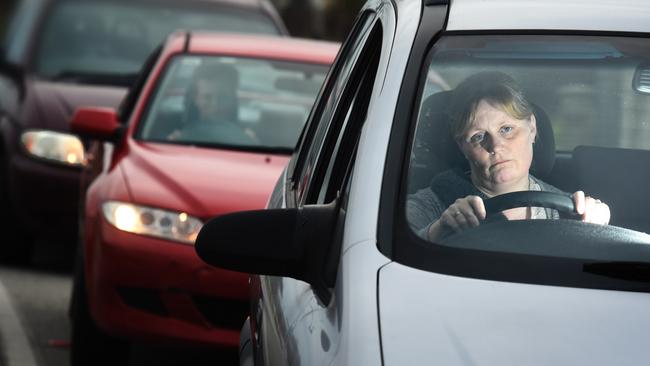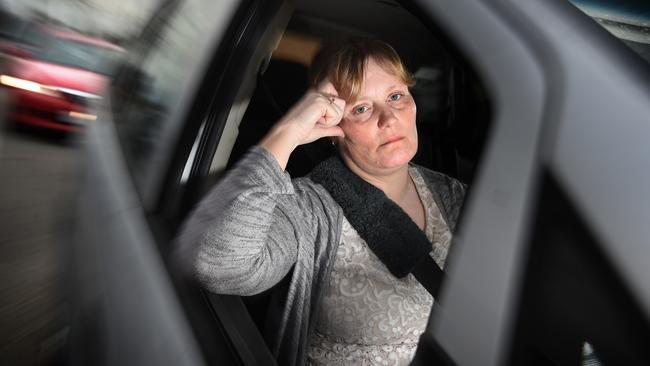New GPS data shows congestion in Melbourne slowing cars down to a crawl
MELBOURNE congestion is hitting critical levels and turning suburban roads into car parks, with shocking new data showing speeds falling as low as 1km/h on some of our busiest corridors. Find out the worst hotspots here.
VIC News
Don't miss out on the headlines from VIC News. Followed categories will be added to My News.
SPEEDS on some of Melbourne’s most crucial roads are falling as low as 1km/h as concerning new data reveals the extent of the city’s congestion crisis.
Figures obtained by the Sunday Herald Sun reveal average weekday speeds are slowing to a crawl along 10 of Melbourne’s busiest corridors.
The go-slow is shown in location and driver data compiled by leading GPS company Here Technologies.
Alexandra Pde at Clifton Hill and Malvern Rd at Toorak were the slowest thoroughfares identified, reduced to a lowest average speed of just 1km/h at 5.15pm and 7.15pm respectively on weekdays.
Their average speeds were little better at 40.9km/h and 37km/h respectively.
Barkly St in Footscray also crawled to 1km/h — incredibly at 10.30am on weekdays.
RADICAL CBD CONGESTION TAX PLAN REJECTED
HOW MUCH OUR NIGHTMARE TRAFFIC IS COSTING YOU
REVEALED: VICTORIA’S WORST AREAS FOR ROAD RAGE ATTACKS
The car crush has ironically worsened because of major road projects aimed at reducing congestion.
Here Technologies senior product manager for traffic services Ben Wilson said the data showed congestion was increasing in Melbourne year-on-year.
“It is getting worse and getting worse quickly because of the amount of construction going on,” he said.

“We need to recognise it is not a perfect world and there’s more and more vehicles coming on to the road.
“The option for us to is work with governments and third party sources to collect as much real-time information as possible.
“If all of that information was available and connected we could see a network where governments can divert vehicles along different routes to cut down congestion.
“There’s hope but there’s going to be a lot of change over the next few years before we get to that point.”
The modelling shows Melbourne’s busiest period is at 5pm on a Thursday, with a shocking 19.8 per cent of the network congested.
School pick-up has become a roads nightmare, especially in Melbourne’s northeast.
Rosanna Rd in Heidelberg, Thompsons Rd in Lyndhurst/Skye and Upper Heidelberg Rd in Ivanhoe were all slowest between 2.15pm and 2.45pm.
Roads Minister Luke Donnellan said the State Government was tackling problem corridors with the most road improvements in decades.
“We’re duplicating Thompsons Rd and O’Herns Rd, adding lanes to the M80 Ring Rd and building North East Link to take the pressure off local roads like Rosanna Rd, Burke Rd and Upper Heidelberg Rd,” he said.
About 1.1 million Melburnians drive to work each day and the average commute time across the city is about 35 minutes each way.

“Melbourne is growing fast and we understand congestion is a fact of life in a busy city such as ours — but we’re working hard to keep people moving on our roads,” VicRoads director of journey services Sameem Moslih said.
“We know we can’t simply build our way out of congestion and that’s why we’re investing in technology-based solutions, including better monitoring and data collection, so we all use our freeways and roads more efficiently.”
Cranbourne resident Annette Neilson said commuting and school pick-ups were “like a game of Russian roulette”.
“You just never know how long you’re going to be stuck … Last week it took my husband an hour to get home from what should be a 15-minute drive,” she said.
“During peak we add up to half an hour to what the trip should take because it’s that ridiculous.
“Part is it the amount of estate going up out this way. We used to be at the edge of the suburb and now we’re in the middle of it.”
South East Melbourne board member Bruce Billson said congestion was one of the city’s most serious issues.
“Time spent sitting in traffic is time people don’t get to spend with their families,” he said.
“That is why South East Melbourne is advocating for projects that would ease congestion right across the city, including the Port Rail Shuttle scheme which would see 3500 trucks a day taken off our roads as freight is moved to rail freight hubs in Melbourne’s southeast, north and west.”
Data provided for this article has been provided by Here Technologies


